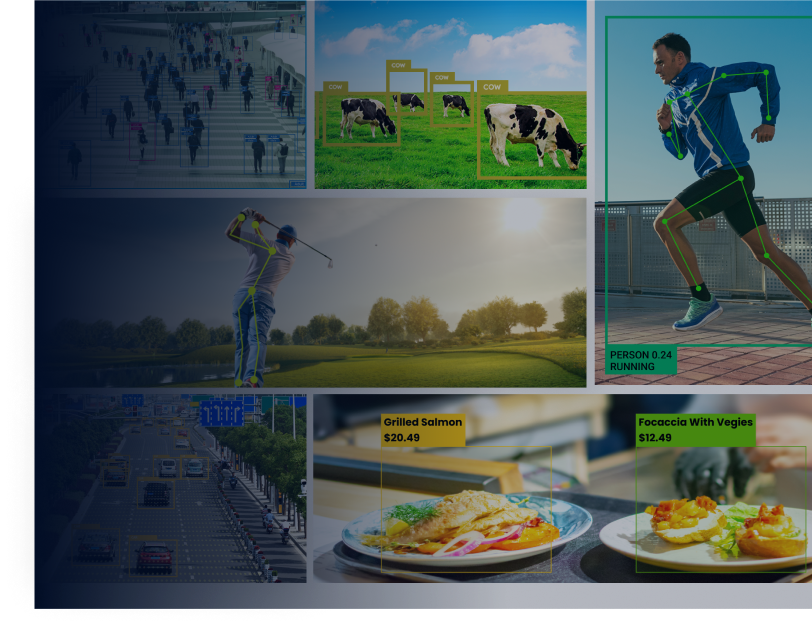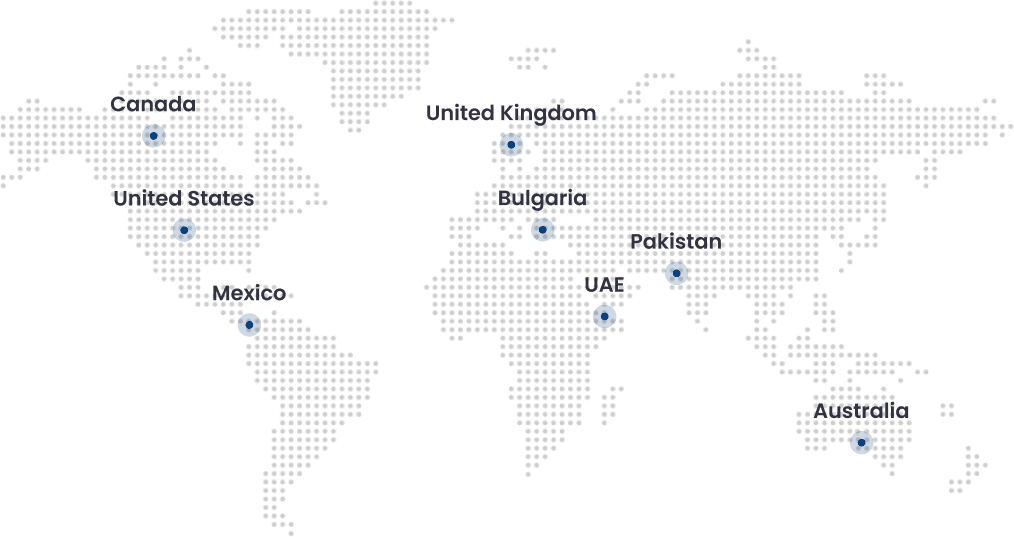We all use Instagram or Snapchat and enjoy fun filters that transform us into cute puppies or give us a funky pair of sunglasses. Behind the scenes, a technology called semantic segmentation is at work.
Semantic segmentation helps computers understand images as humans do. It looks at each pixel in a photo and figures out what it represents; for example, “This pixel is part of a dog, and this pixel is part of a hat.” This creates a “segmentation map” that tells you exactly what each part of the image represents.
To learn more, keep reading this blog post, which will explain semantic segmentation and why it matters. By the end, you’ll understand how it works and its impact on different uses.
What Is Semantic Segmentation?
Semantic segmentation is all about splitting an image into different segments, each representing a particular object or class. Unlike other image segmentation, which breaks an image into regions with similar color or texture, semantic segmentation aims to accurately identify and classify objects right down to the pixel level. This detailed understanding lets us analyze images more thoroughly, making it super important for various computer vision applications.
Why Is Semantic Segmentation Important?
Semantic segmentation is a crucial computer vision technique for several key reasons.
- Detailed Scene Understanding: Semantic segmentation gives computers a detailed understanding of images by categorizing each pixel into specific groups. This helps machines grasp the composition and connections between objects, areas, and elements in a visual scene at a pixel level.
- Improved Object Detection and Localization: Semantic segmentation’s detailed pixel-level labeling enhances object detection and localization accuracy beyond traditional bounding box methods. This precision is vital for tasks such as autonomous driving, medical imaging, and augmented reality, where understanding exact object boundaries is critical for reliable performance and safety.
- Enhanced Contextual Awareness: Semantic segmentation goes beyond just identifying individual objects. It also provides important contextual information about the relationships between different elements in the scene. This contextual understanding is what we need to make informed decisions, especially in complex environments.
- Enabling Advanced Computer Vision Tasks: Semantic segmentation is a basic skill for computers to understand images deeply by labeling each pixel. It’s crucial for more advanced tasks in computer vision, like identifying specific objects in a scene (instance segmentation), categorizing everything in a scene (panoptic segmentation), and having an overall understanding of what’s happening in an image.
- Wide-Range Applications: Semantic segmentation is widely used across many fields, from autonomous vehicles and medical imaging to satellite imagery analysis and augmented reality. Its ability to categorize each pixel in an image makes it a fundamental tool in computer vision, crucial for understanding and analyzing visual data in diverse applications.
- Improved Automation and Efficiency: Semantic segmentation improves how computer vision works by automatically labeling pixels, cutting down on the need for manual work.
How Does Semantic Segmentation Work?
Semantic segmentation is a computer vision method that assigns a label to every pixel in an image, helping machines understand the meaning of different parts of a visual scene. Here’s how it works in detail:
- Image Input: The process starts with an input image that we want to segment.
- Preprocessing: The image may be preprocessed by steps like resizing, normalization, and color conversion to improve its quality for the segmentation model.
- Convolutional Neural Network (CNN): Next, the image is fed into a convolutional neural network (CNN). This CNN has been trained on extensive datasets with pixel-level annotations, enabling it to learn and distinguish between various objects, backgrounds, and other semantic elements within images.
- Feature Extraction: The CNN extracts features from the input image using convolutional and pooling layers. These features capture spatial information and help identify objects and their boundaries within the image.
- Classification: The extracted features are then used to classify each pixel into different semantic categories. This assigns a class label to each pixel based on the features extracted from that pixel.
- Segmentation Mask: The output of the semantic segmentation model is a color-coded map, where each color represents a different class label. This color-coded map is known as a segmentation mask. The segmentation mask helps in distinguishing between different objects and regions within the image.
An Example of Semantic Segmentation
For instance, consider an image of a city street. The semantic segmentation model would classify each pixel as follows:
Road: Red
Building: Blue
Car: Yellow
Pedestrian: Green
The resulting segmentation mask would show the road, buildings, cars, and pedestrians in their respective colors, allowing the model to understand the different regions and their relationships within the image.
Applications of Semantic Segmentation
Semantic segmentation has numerous applications across various fields.
- Autonomous Vehicles: Helps vehicles understand their surroundings and identify pedestrians, vehicles, road markings, and other objects for safe navigation.
- Medical imaging aids in tasks such as tumor detection, organ segmentation, and disease diagnosis, enhancing healthcare practices.
- Satellite Imagery Analysis: Used for urban planning, environmental monitoring, disaster response, and agricultural management.
- Augmented reality enables the accurate segmentation of objects in real time, facilitating the integration of virtual elements into the physical environment.
Popular Algorithms for Semantic Segmentation
There are quite a few algorithms out there for semantic segmentation, and they vary in complexity and performance. Some of the popular ones include:
- Fully Convolutional Networks (FCN): This one is deep learning-based and uses convolutional neural networks. It has state-of-the-art results on various benchmark datasets.
- U-Net: This fully convolutional network has an encoder-decoder setup and is specifically designed for biomedical image segmentation.
- SegNet: This method uses an autoencoder architecture and was among the first to apply deep learning to semantic segmentation.
- Mask R-CNN: Unlike the others that classify pixels, this method first identifies objects using region proposals and then performs semantic segmentation within those regions.
Challenges and Future Directions
Semantic segmentation is a complex task and faces many challenges, such as:
- Class imbalance: In specific applications, some classes may be underrepresented in the training data, making it challenging to detect and classify those objects.
- Ambiguity: Some objects in an image may have ambiguous boundaries or belong to multiple classes, making it difficult for algorithms to segment them accurately.
- Real-time processing: Many real-world applications require fast and efficient semantic segmentation, which can be challenging due to the large amount of data and complexity involved.
Strategies to Overcome Challenges
Despite the challenges, several strategies can help improve the performance of semantic segmentation algorithms.
- Data Augmentation: This technique artificially increases the size of a training dataset by creating modified versions of the existing data. Techniques such as rotation, scaling, flipping, and cropping can help address class imbalances and make the model more robust.
- Transfer Learning: Leveraging pre-trained models on large datasets can provide a strong foundation for semantic segmentation tasks. Fine-tuning these models on specific datasets can boost performance, especially when dealing with limited training data.
- Model Ensembling: Combining predictions from multiple models can improve segmentation accuracy. An ensemble of models allows the strengths of different architectures to complement each other, leading to better results.
Future Trends in Semantic Segmentation
As technology advances, we can expect several trends to shape the future of semantic segmentation.
- Incorporating 3D Data: With more 3D sensors available, adding 3D data to segmentation can give better details, improving accuracy in complex places.
- Edge AI and Real-Time Processing: Better hardware and software mean faster real-time processing. Edge AI lets semantic segmentation happen on devices, useful for autonomous vehicles, drones, and IoT.
- Integration of Multimodal Data: Using data from different sources like images, LiDAR, and radar gives deeper insights, making segmentation more accurate in fields like autonomous driving and medical imaging.
Getting Started with Semantic Segmentation
If you’re interested in diving deeper into semantic segmentation, here are some resources to get you started.
- Datasets: Some popular datasets for semantic segmentation include PASCAL VOC, Cityscapes, COCO, and ADE20K.
- Libraries and Frameworks: Many libraries and frameworks, such as TensorFlow, PyTorch, Keras, and OpenCV, are available for implementing semantic segmentation models.
- Tutorials and Courses: Plenty of online tutorials and courses cover the basics of semantic segmentation with hands-on examples. Some recommended ones include the Coursera course on image segmentation and the official documentation for popular frameworks like TensorFlow and PyTorch.
Semantic Segmentation: Key Takeaways
- Semantic segmentation is a technique for accurately identifying and classifying objects in an image at the pixel level.
- It has various applications in fields like self-driving cars, medical imaging, and satellite imagery analysis.
- The process involves pre-processing, feature extraction, pixel-wise classification, and post-processing to refine the results.
- Popular algorithms for semantic segmentation include FCN, U-Net, SegNet, and Mask R-CNN.
- Challenges faced by semantic segmentation include class imbalance, ambiguity, and real-time processing requirements.
- Overall, semantic segmentation is an essential technique in computer vision and has many practical applications.

Dawood is a digital marketing pro and AI/ML enthusiast. His blogs on Folio3 AI are a blend of marketing and tech brilliance. Dawood’s knack for making AI engaging for users sets his content apart, offering a unique and insightful take on the dynamic intersection of marketing and cutting-edge technology.










